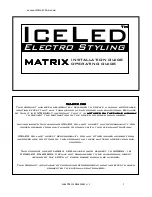
11
Design and description
1
2
3
4
5
7
6
Fig. 4
Connection panel at bottom left of appliance base (see Fig. 3 , Items 10 and 11)
1 Socket 230 volt/max. 5 A
2 Floating switch contact SP = setpoint reached for message that the temperature in the
chamber lies within a tolerance range of ± 2 K. Load capacity 24 volt/2 amp. (optional)
3 Floating switch contact alarm for error display. Load capacity 24 volt/2 amp. (optional)
4 Additional freely positionable Pt100 temperature sensor (optional)
5 Floating switch contacts A, B and C, can be switched, depending on programme, via “Cel-
sius” software. Load capacity 24 volt/2 amp. (optional)
6 USB
interface
7 Parallel printer port
2.2 Description
2.2.1 Temperature operation
The test chamber can heat the interior up to 190 ºC and cool it down to –42 ºC.
To avoid condensation in the interior, the appliance has various heating systems:
►
low-voltage door frame and seal heating, contacted via door contacts
►
condensation water outlet pipe heating
►
heated glass sheet and glass frame heating (only for the glass door option)
The temperature is lowered through an integrated cooling unit.
2.2.2 Humidity operation (only CTC climatic test chamber)
The CTC climatic test chamber can in addition lower humidity in the chamber to 10 % rh or
increase it to up to 98 % rh. Humidification takes place via a PTC hot steam generator.
The amount of steam is controlled by two self-priming tube dosing pumps.
Dehumidification takes place through controlled cooling the evaporator temperature below
the dew point.
Humidity measuring takes place via a temperature-resistant capacitive humidity sensor.
The humidity setpoint can be adjusted within the range 10 to 98 % rh. If a humidity setpoint
of 0 % rh is set, the humidification and dehumidification control is completely deactivated.












































